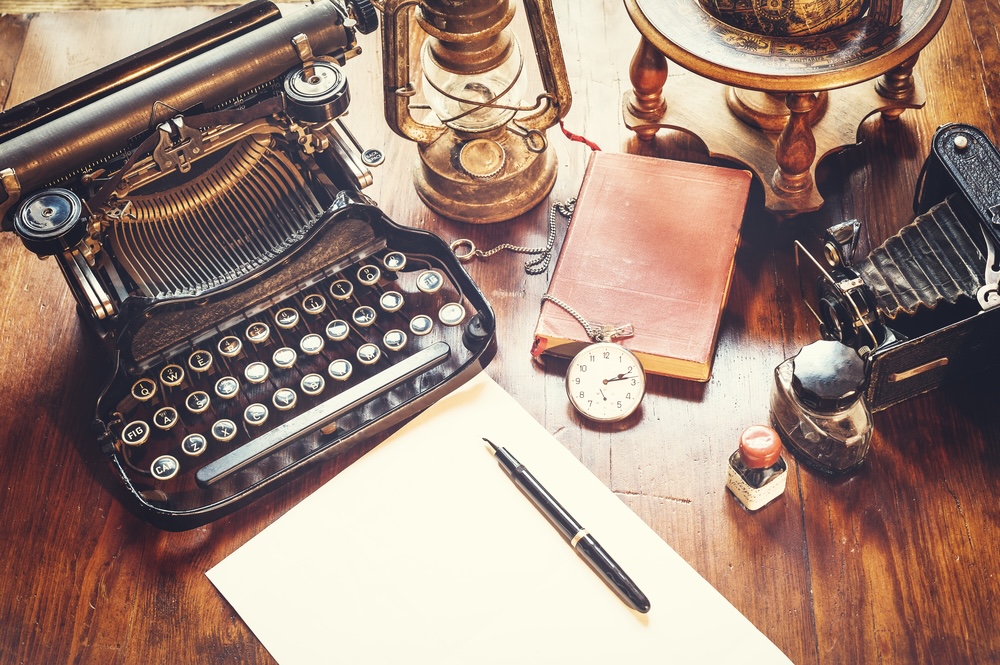There’s a particular pleasure in reading books about making. Business books are “maker” books, in a sense. So are self-help books. The best of these “maker” books are the ones with lots of anecdotes, where we get to see the principles at work. Even though these books can be cheesy, we’re drawn to them anyway, because they help us bridge the gap between thinking and action.
Bruce Herman’s new book, Makers by Nature: Letters from a Master Painter on Faith, Hope, and Art, is a warm, perceptive, and visually beautiful contribution to this genre. The subtitle implies that this is a book only for painters or creative artists, but Herman’s gentle reflections on the process of painting go far beyond technical tips; rather, he delves into why he makes, and the answer to that has significance for every human being.
Admittedly, I have a horse in this race. A few years ago, I edited and contributed to a book called Why We Create: Reflections on the Creator, the Creation, and Creating. It’s been a jam-packed couple of years, however. In the time since, AI waved and said, “Hello, World!” and the question of why we create has been subsumed into a more foundational question: Should we create anymore? Or should we hand that activity off to computers and content ourselves with consuming?
Herman’s book, published at the beginning of 2025, does not directly address the rise of AI. The specter of automated making hangs over the letters, though. Herman considers why we even bother to paint when we can simply take photographs; why, he wonders, do we need to make things, with our hands and our bodies and our own collection of sense-based memories, when a machine can create much more easily? The search for a coherent answer to this increasingly urgent question takes Herman through many fascinating details of the process of making a physical piece of art, but also through reflections on Scripture, anecdotes about his family and friends, and ultimately, a moving account of the God-imitating gratuity of being human.
~ ~ ~
Makers by Nature is a series of epistolary essays, and the form is particularly well suited to Herman’s purpose: a multifaceted study of how and why we make things. He is a good, clear writer and a careful reader conversant in the major literature on this topic; he certainly could have written a series of essays to argue his point. But instead, he has given us a collection of quasi-fictional letters, collected over decades, written to friends, students, colleagues, and illustrated with beautiful color prints of some of his own paintings. In taking this approach, Herman honors that most abused adage to “show, not tell.” Rather than telling us about how he approaches his own art and about why humans should care about art and cultivate their own creative processes, Herman shows us.
It’s also an unusual book—at least, unusual for today, when few people maintain written correspondence of any kind, let along carry on deep discussions of theology, philosophy, and art over years by way of letter. He includes only his own letters; the reader gets to piece together the sense of his correspondents’ responses from Herman’s replies. Herman explains in the introduction that these letters are not entirely real; they have been edited and sometimes reconstructed from discussions. But, as he writes, “the imaginary letters gathered in this book are to real persons … with whom I have had substantive discussions (and real correspondence) over years, in some cases covering decades.” Even if not all the letters here were literally written and posted in the mail, Herman has cultivated the habit of sustaining ongoing discussions, both in person and via correspondence, on difficult topics. That in itself is an admirable feat. It also makes a charming structure for the book, one explicitly borrowed from Rilke’s famous Letters to a Young Poet.
Herman explains that he didn’t want to write “a tightly reasoned essay about art and faith”; rather, he wanted to craft a book that readers could dip into. He offers the book “to anyone and everyone who thinks and wrestles with how we both make and embody images—pointing them … towards the One who is the true image of the living God.”
The book is divided up by themes. For each theme, Herman addresses a series of letters to a single person and re-creates an ongoing discussion. The dates on the letters show that sometimes these discussions unfolded over weeks, while others lasted for decades. The strength of this epistolary structure is that it allows Herman to connect his reflections on faith and art naturally to a specific artistic or technical question. The first set of letters, “Art and Craft: Letters to Ella,” show Herman advising a young art student on how to prepare for her thesis exhibition. He helps her navigate creative tensions with her professors and gives her the courage and conviction to form her own theories about creation. By the end of the series, Ella finds that she is creating deeper and grander art than she had hoped possible.
I could write a brief review of each set of letters (there are 20) because each one is full of beautiful, thought-provoking reflections on art, making, and our identity as creators, as well as much-needed correctives to the way our culture thinks about art. In “Art and Craft,” for example, Ella is struggling through the question of decorative vs. fine art. Herman writes,
The whole division between fine and applied arts, between craft and poesis, is artificial and hollow. In truth that very word, poesis, originally meant simply “to make”—and making requires craft. … I believe genuine (and great) art springs from humility, from receptivity to beauty and the wonders of the created world.
This brief quotation is the distilled wisdom of years, and it would take years—and much making—to plumb its depths. Here Herman neatly summarizes a massive issue in contemporary art: the false dichotomy between high and low art, which has sterilized both. Craft art, or the habit of making that has been the province of humanity since we lived in caves, is both despised and nearly dead. Machines have taken over nearly all of it, and AI threatens to consume the rest. But high, or fine, art depends on a thriving craft culture for its survival. Low, local, provincial, craft art is the soil from which fine art springs. Artificial distinctions between “fine” and “decorative” art do nothing but strangle the life out of both types, says Herman. What really matters is being able to discern beauty, craftsmanship, and technical mastery in whichever kind of art we behold.
In “Tradition: Letters to Brent,” Herman gives a concise description of the relationship between tradition and innovation within art:
A living tradition involves the intervention of the genuinely new thing. … [It] can only be new if the author or painter knows the tradition in his bones. … Being a traditional artist could be the most avant-garde move you could make! And by “traditional” I do not mean that our paintings would look like they’d been made a century or more ago. They’d look truly fresh but deeply resonant with all the art that came before.
Here Herman draws on T.S. Eliot’s “Tradition and the Individual Talent” but lends his own warm, personal voice to Eliot’s famous argument. Discussions of traditional art desperately need Herman’s amiability and humility. All too often, “traditional” art and so-called traditionalists or formalists have a reputation (often, but sadly not always, undeserved) of being curmudgeonly, closed-minded, and resentful of innovation. What Herman shows in just this one paragraph is that a profound respect for tradition in art should not make our work stuffy or derivative; rather, it should be a fruitful love that, joined with our respect and attention for the real sensory experiences of the world we live in today, should birth art that is both new and reminiscent.
~ ~ ~
It should be abundantly clear at this point what a rich gift Herman’s book is to artists. But why should non-artists care about any of this? Isn’t this all a niche conversation, rather like where to buy cheap turpentine or what the difference is between metonymy and synecdoche?
The answer—and this is where Herman’s book becomes most timely—is that every human being is a maker. In the mid-20th century, as industrialization encroached on more and more of our creative activities, the poet and painter David Jones begged us to recall our identity not as Man the Consumer but as Man the Maker. Herman echoes Jones’ cry. Humanity bears the image of God. A central art of that image is our capacity to create, to shape the world around us. When we cede that creative capacity to machines, when we cease to live in this world as creators and choose instead to live as consumers, we give up more than the pleasure of making art. We risk forgetting what it means to be human—and what we know about God.
God is no machine, cranking out stuff for our consumption. Neither is God a mindless consumer, interested only in what he can devour. Rather, God is a creator. He forges and makes. He partners and collaborates. He forms and shapes. He risks misinterpretation and abuse of what he creates. He brings things into being and lets them make their own way, and leaves them in the hands of those made in his creator image.
Here is the greatest insight Herman offers to us in Makers by Nature: In God, creation and relationship are one and the same act. We cannot have one without the other. If we reject our identity as creators, we will find that our relationships become stale and fruitless. But to truly be creators, we must cultivate relationships—relationships with our living peers, yes, but also deep ties to those who have come before us and deep love for those who are coming after us. Everything we make, according to Herman, is a letter to someone we love. So let us write the very best letters we can.

